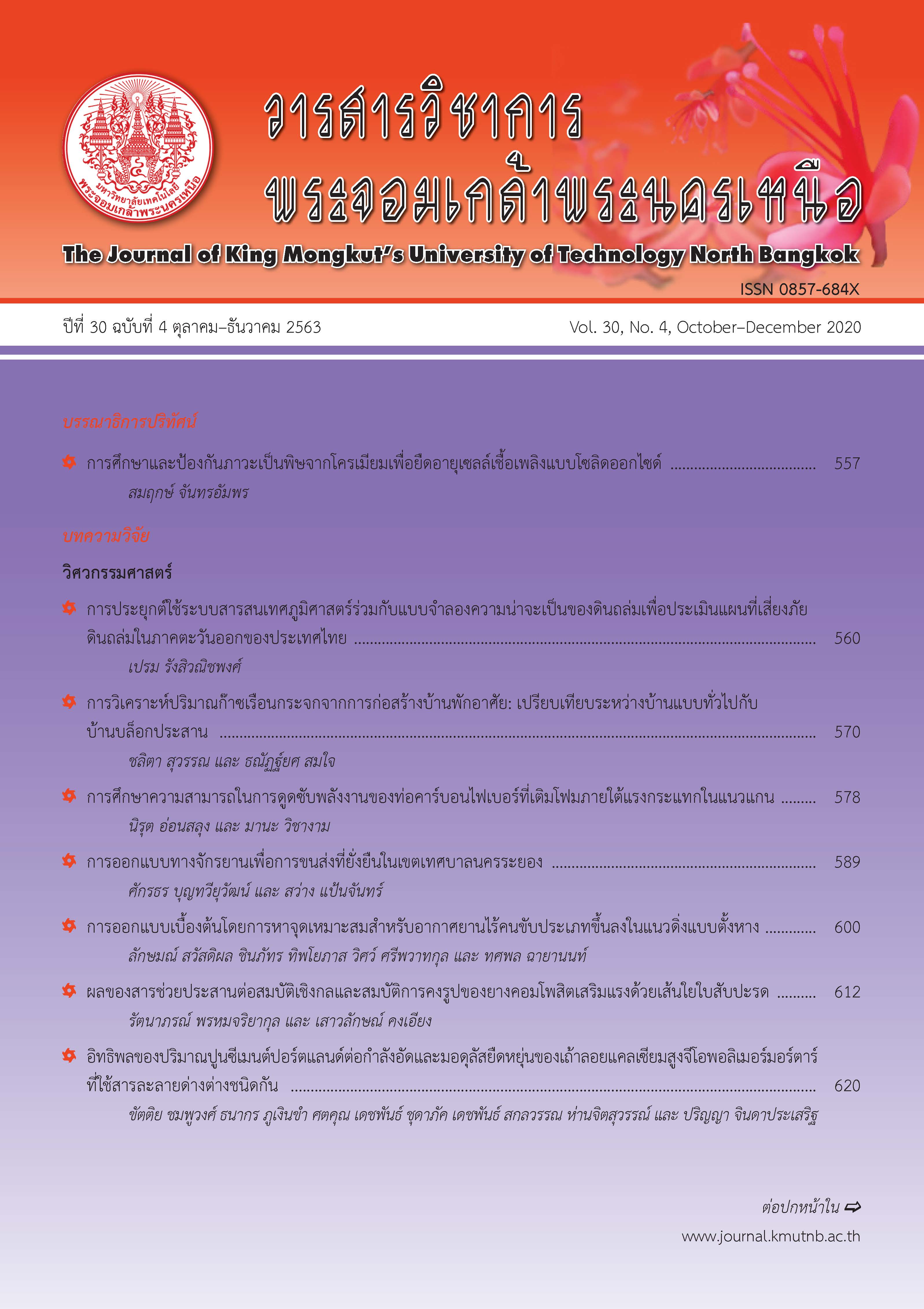Mechanical Properties of Glued Bamboo Laminated with Para-timber
Main Article Content
Abstract
The main objective of this research is to study the mechanical properties of glued bamboo laminated with para-timber and its resistance of ultimate strength. The researcher designed the specimens (model) of glued bamboo laminated with para-timber, divided into 3 types: 1) Single Layer, 2) Double Layer, and 3) H Layer, and cut the specimen materials with the dimension of 30 mm thick, 30 mm wide, and with the length of 600 mm. The study found that the glued bamboo laminated with para-timber could recover and continue to bear the impact load after the first deformation. However, on the investigation of its resistance of ultimate strength, it was found that the glued para-timber was immediately deformed after the failure and could not continue to bear the impact load. When comparing the glued bamboo laminated with the para-timber, it was found that the H Layer specimen of glued bamboo laminated with para-timber is able to resist the maximum Modulus of Rupture at 76.97 MPa, equivalent to 784.875569 kg/cm2 with the longest-lasting bearing capacity behavior, and with the maximum toughness ratio at 0.1574 mm. The Double Layer model is able to resist the maximum Modulus of Rupture at 56.48 MPa when it has the maximum Yield Strength at 2.184 kN and the toughness ratio at 0.1396 mm. The industrial timber fabrication process of H Layer specimen requires more steps than that of the Double Layer specimen of glued bamboo laminated with para-timber on the step of glued laminating step.
Article Details
The articles published are the opinion of the author only. The author is responsible for any legal consequences. That may arise from that article.
References
[2] S. Piriyasurawong and T.Tachakitkachorn, “Development of glued laminated timber in Thailand,” Journal of Environmental Design, Faculty of Architecture Chiang Mai University, vol. 7, no.1, 2019 (in Thai).
[3] W. Chunwarin, Culm structure and composition of three thai bamboos: Forest research bulletin number 47. Bangkok: Kasetsart University, Faculty of Forestry, 1976 (in Thai).
[4] A. M. Harte, “Mass timber – the emergence of a modern construction material,” Journal of Structural Integrity and Maintenance, vol. 2, no. 3, pp. 121–132, 2017.
[5] JF. Correal and F. Ramirez, “Adhesive bond performance in glue line shear and bending for glued laminated guadua bamboo,” Journal of Tropical Science, vol. 22, no. 4, pp. 433–439, 2010.
[6] Standard test methods for small clear specimens of timber, ASTM D143-14, 2016.

